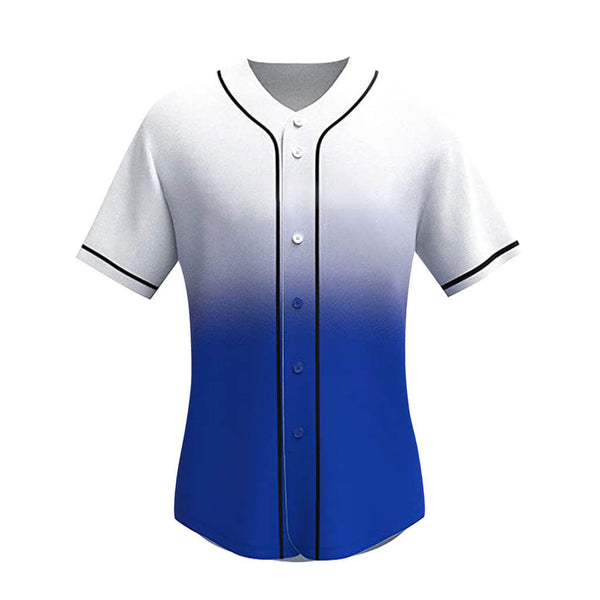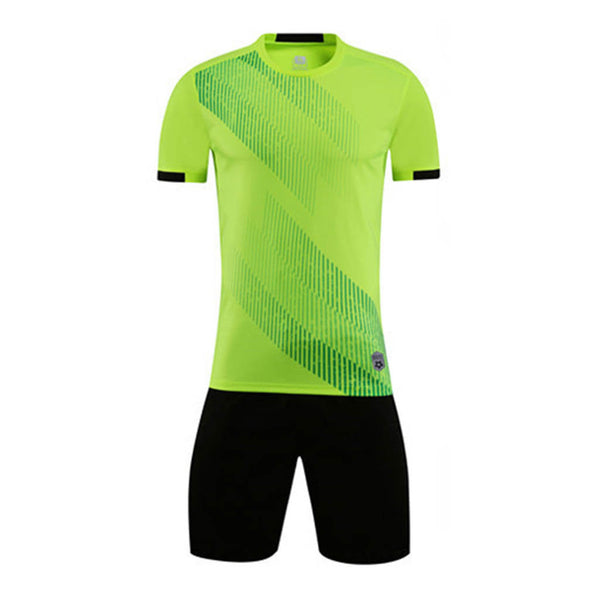American Football vs. Soccer vs. Rugby: A Comprehensive Comparison of The Key Differences and Similarities
June 09 2024 – Power Rich

Sports have an incredible way of uniting people across the globe, igniting passion, and showcasing athleticism in various forms. Among the ones out there, American football, soccer (known as football in most parts of the world), and Rugby stand out as dynamic and enthralling games. While each possesses its own fervent fan base, they also share some remarkable similarities and differences. Come with us as we explore these favorite sports, discovering how they're connected and celebrating what makes each one special.
Sports Fields Comparison
In the world of sports, playing fields serve as common ground, adorned with vibrant green grass that cushions players' falls, lessening the impact and reducing the risk of injuries.
But take a closer look, and you'll notice the distinct characteristics that mark each field as unique.
Soccer
In soccer, the field takes the shape of a familiar rectangle, stretching between 65 and 80 yards wide and 110 to 120 yards long. It's a canvas adorned with precision: a prominent white circle at its heart, the epicenter for match kick-offs. The boundary is crisply outlined by a defining white rectangle, crowned with four quarter circles in each corner, which are signposts for executing those crucial corner kicks. And there, framing the goals, lie the "penalty boxes," rectangular enclosures set around each net.
American Football
North American football fields mirror soccer's length, measuring 120 yards, but differ in width, typically extending approximately 54 yards (or 53 1/3). Clear white lines are painted every 10 yards for a total sum of 100, with the remaining 20 yards as the scoring area. Towering at 30 feet high, the football goalposts stand as distinctive "tuning forks," serving as targets for scoring additional points through skillful ball kicks.
Rugby
Now, let's talk about Rugby. How long is a rugby field? Its field, by far the grandest, sprawls between 122-133 yards in length and spans 74 yards in width. Picture the markings, akin to football's, but with a twist—10-meter lines instead of the customary 10-yard markers. And the pièce de résistance? Rugby boasts imposing goalposts fashioned in the shape of an H, soaring from 40 feet high, challenging players with their height and structure.
Equipment
Let's talk about what sets these sports apart—their equipment.
Soccer
Soccer embraces simplicity with its round, 8.7-inch diameter ball, known for its universal appeal.
When it comes to their uniforms, players keep it easy with jerseys, shorts, and team-colored boots while safeguarding their legs with shin pads tucked under their socks.
American Football
Now, football is a different ball game altogether! Footballs are 12-inch-long prolate spheroids, and get this—the earliest footballs were made from inflated pig bladders, which gave them their unique form.
In contrast to soccer, football players gear up with helmets, shoulder pads, gloves, girdles housing protective pads, and more. These essential layers safeguard players from intense impacts, providing a sense of security on the field.
Rugby
In Rugby, balls share a similar oval shape to American football. However, when you look closer, you'll find that American football is more expansive and has more pointy ends.
Despite its physical nature, Rugby takes a more minimalist approach to protective gear. Gear such as protective groin cups and mouth guards are optional, showing their grit and resilience in a game known for its intense encounters.
Navigating the Playbook
In each sport, these rules shape the gameplay and the strategic maneuvers that teams employ to outwit their opponents, adding layers of complexity and excitement to the field. Let's take a look.
Soccer
With soccer, handling the ball is a strict affair. With 11 players on each side striving to score a point, only the goalkeepers hold the privilege of clutching the ball within the outline of the penalty box. For the rest of the squad, it's all about using feet and heads to maneuver the ball toward the opposing team's rectangular net. Tackling is a fine art here—it's fair game if aimed at the ball, but taking down an opponent without the ball can lead to a player's temporary dismissal from the match, putting the team at a substantial disadvantage.
American Football
Now, onto North American football, where 11 players navigate the field aiming to carry the ball in hand across the opponent's end line for a touchdown. In every play, the offensive team gets 5 downs to try and convert, giving them 5 chances to advance the ball before giving up possession. Tackling is pivotal here, integral to gaining an edge in the game. However, there's a delicate balance—while encouraged, overly aggressive tackles can cost the team penalties, often resulting in them losing ground.
Rugby
Rugby played with 15 players per team, mirrors football in ball handling and tackling but introduces a crucial twist. Passing the ball is only permitted if the receiver stands behind the player making the pass, adding a whole new layer of challenge to the game. Kicking the ball is also fair play, often utilized by teams to thwart imminent threats to their goal line.
Fouls and Consequences
Each sport's distinct set of penalties not only maintains fairness but also serves as a crucial element in shaping the flow of the game, ensuring player safety without compromising the competitive spirit that drives these sports forward.
Soccer
In soccer, fouls trigger a range of penalties—a free kick, a penalty shot, a cautionary yellow card, or the ultimate expulsion with a red card. An offside pass, where a player passes to a teammate beyond the last defender, results in a turnover, shifting possession to the opposing team.
American Football
In football, foul play can cost the defending team yards or, in more severe instances, a first down. When the tackling team is also on offense, these fouls could lead to significant yardage loss and, in extreme cases, player suspensions.
Rugby
Rugby's fouls are met with penalty kicks as the typical repercussion, yet there's a bit of flexibility. Teams might have the option to choose between a kick, a run, or a scrum, adding an element of strategic decision-making in addressing fouls.
Playbacks
Embracing playbacks doesn't just aim for precision; it's a clear dedication to keeping the spirit of fairness alive. Let's examine how each sport approaches this.
Soccer, American Football & Rugby
When it comes to double-checking those nail-biting moments where a referee's call might be called into question, the concept of instant replay comes to mind.
American football, soccer, and Rugby embrace this technology to ensure fairness on the field. Given the challenging nature of spotting touchdowns, goals, or tries under strict regulations, both sports utilize instant replay to refine calls and uphold fairness. The NFL blazed a trail in 1986, pioneering the use of this technology to enhance accuracy in decisions, setting a precedent for minimizing errors. Following suit, Rugby adopted instant replay in the 1996 Super League, further solidifying its role in refiningcrucial match decisions. For soccer this technology, commonly known as VAR (Video Assistant Referee), was first officially introduced in soccer during the FIFA Club World Cup held in Japan in December 2016.
Point System
Soccer
In soccer, scoring is straightforward—a single goal equals one point.
American Football
Now, players have a few avenues to rack up points in football. The primary methods include touchdowns, worth six points, where a player carries the ball into the opponent's end zone or catches a pass within that zone. After a touchdown, teams have the opportunity to score extra points by kicking the ball through the uprights for one additional point or attempting another.
A short play from the opponent's two-yard line earns a team two points. Field goals and successful kicks through the uprights during regular play earn a team three points. Additionally, a safety occurs when the defensive team tackles an offensive player in their end zone, awarding the defensive team two points.
Rugby
Scoring for rugby shares similarities with football but with its own distinctions. Scoring a try (equivalent to a touchdown in Rugby) earns 5 points, while field kicks are valued at 2 points, and dropkick goals secure 3 points, adding layers of strategy to the scoring system.
Game Substitutions
Substitutions play a crucial role across every sport, whether due to injury, a player's form, or strategic adjustments by the coach. They offer opportunities to revamp tactics or offer much-needed rest to athletes, keeping the game dynamic and competitive.
Soccer
In soccer, the rules around substitutions are strict. Coaches are allowed to make five player changes during a match. Once a playeris pulled out and headed onto the bench, they're sidelined for the remainder of the game.
American Football
Football, on the other hand, grants coaches greater flexibility. They can swap players unlimited times, allowing for tactical adjustments based on the game's evolving dynamics. Football teams often maintain distinct offense and defense groupings, which means the coach needs to be aware of each player's strengths and weaknesses in each play to optimize their performance throughout the game.
Rugby
Rugby, known for its rugged nature, keeps its interchange rules simple. In many professional union competitions, including international matches, teams are typically permitted to make up to eight tactical substitutions throughout the game. These are permanent; however, if a player is injured, they have 15 minutes to be cleared to return to the game.
Timing the Game
Let's unravel the fascinating timing quirks that make each sport tick.
Soccer
The game unfolds across two 45-minute halves, bookended by a refreshing 15-minute halftime break. Remarkably, the clock never pauses, even amid injuries, fans' antics, or the ball's venture out of the pitch. Enter the referee's role: they tack on "stoppage time" at the half's end, compensating for those lost moments.
American Football
Football brings its own tempo. Picture the game divided into four quarters of 15 minutes each, alongside an equally spirited halftime break—unless it's the grand Super bowl, where halftime entertainment accounts for 20 - 30 minutes. Here, the clock pauses whenever the ball isn't in play, be it touchdowns, out-of-bounds, injuries, or coach-called time-outs. Speaking of the latter, coaches seize five-minute windows for strategic huddles, each team armed with three time-outs per game. The game easily extends beyond the standard hour when both teams milk these moments.
Rugby
Last but not least, how long is a game of Rugby? There are two halves of 40 minutes each, embellished with a snug 10-minute halftime break for coaches to recalibrate strategies. Here, the referee holds the power to momentarily halt the clock during crucial pauses like injuries, substitutions, and discussions with other referees. While these breaks are vital for player well-being and ensuring fairness, they are known to sometimes extend the match duration by a few extra minutes.
Wrapping it up
Whether you're a die-hard fan of one or simply an admirer of sports in general, exploring the nuances of American football, soccer, and Rugby unveils a fascinating world of athleticism, strategy, and camaraderie. The beauty lies not just in their differences but also in the shared passion they ignite among fans worldwide. So, which one stands out to you the most? Feel free to share your thoughts and experiences below!










